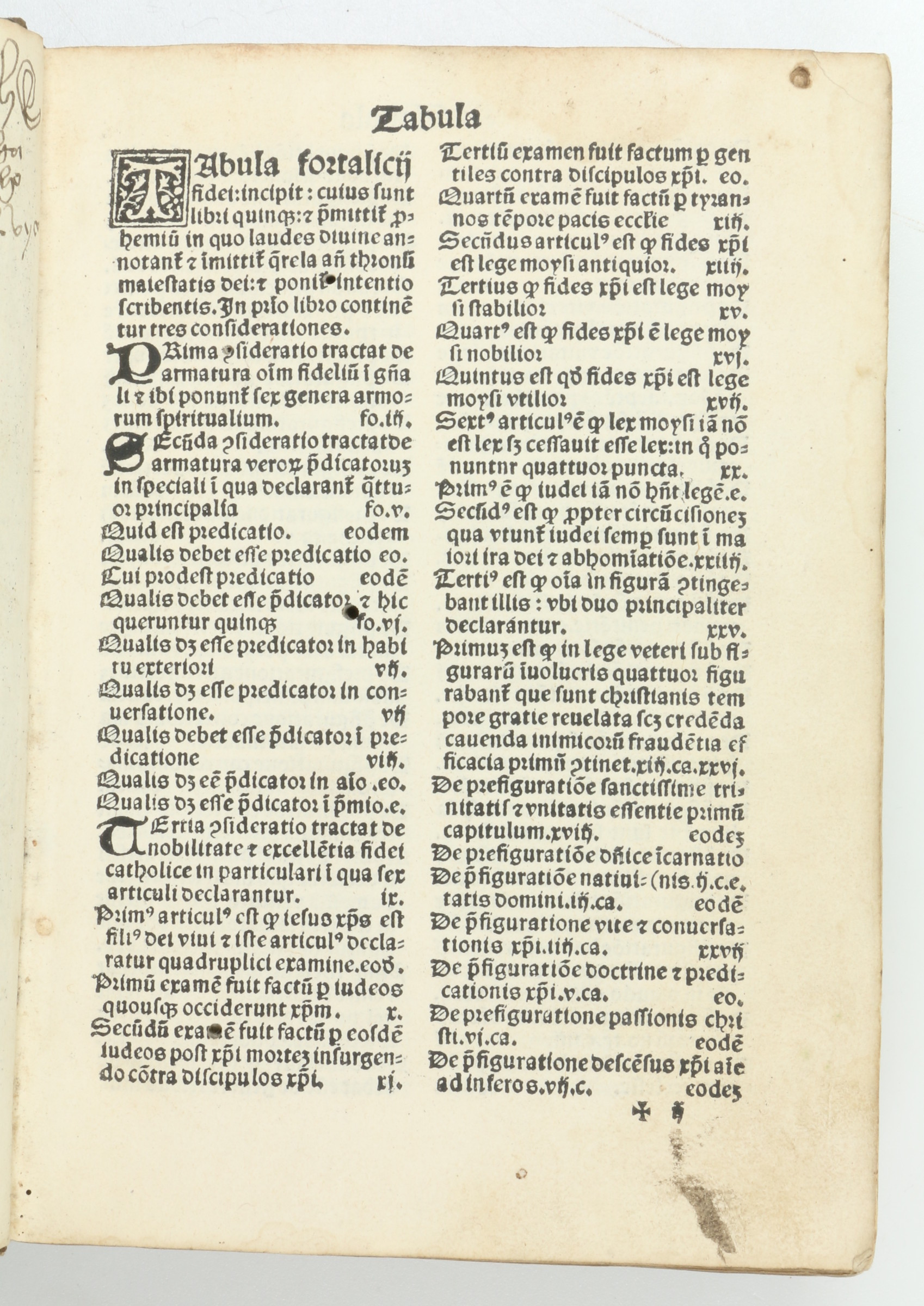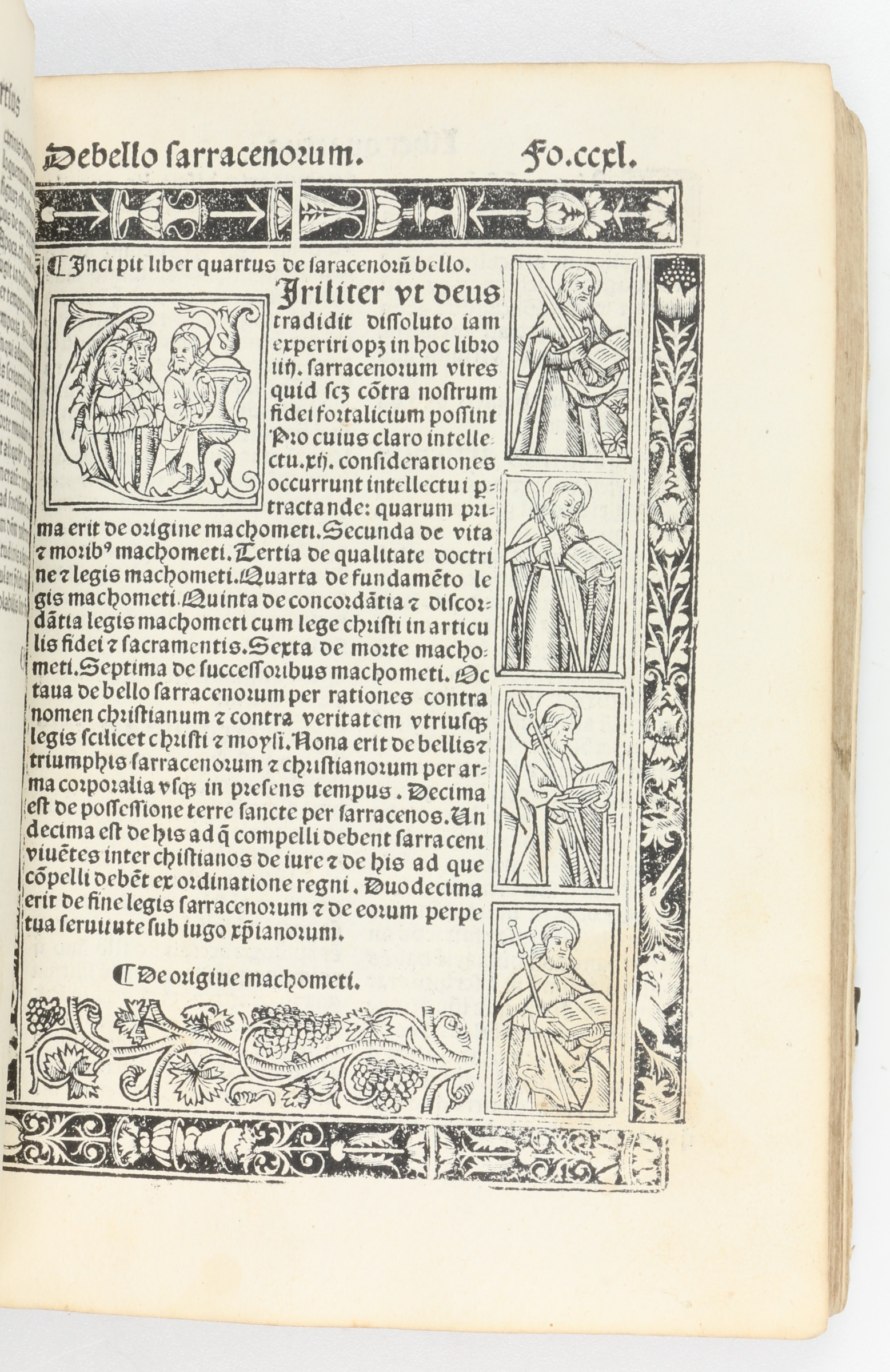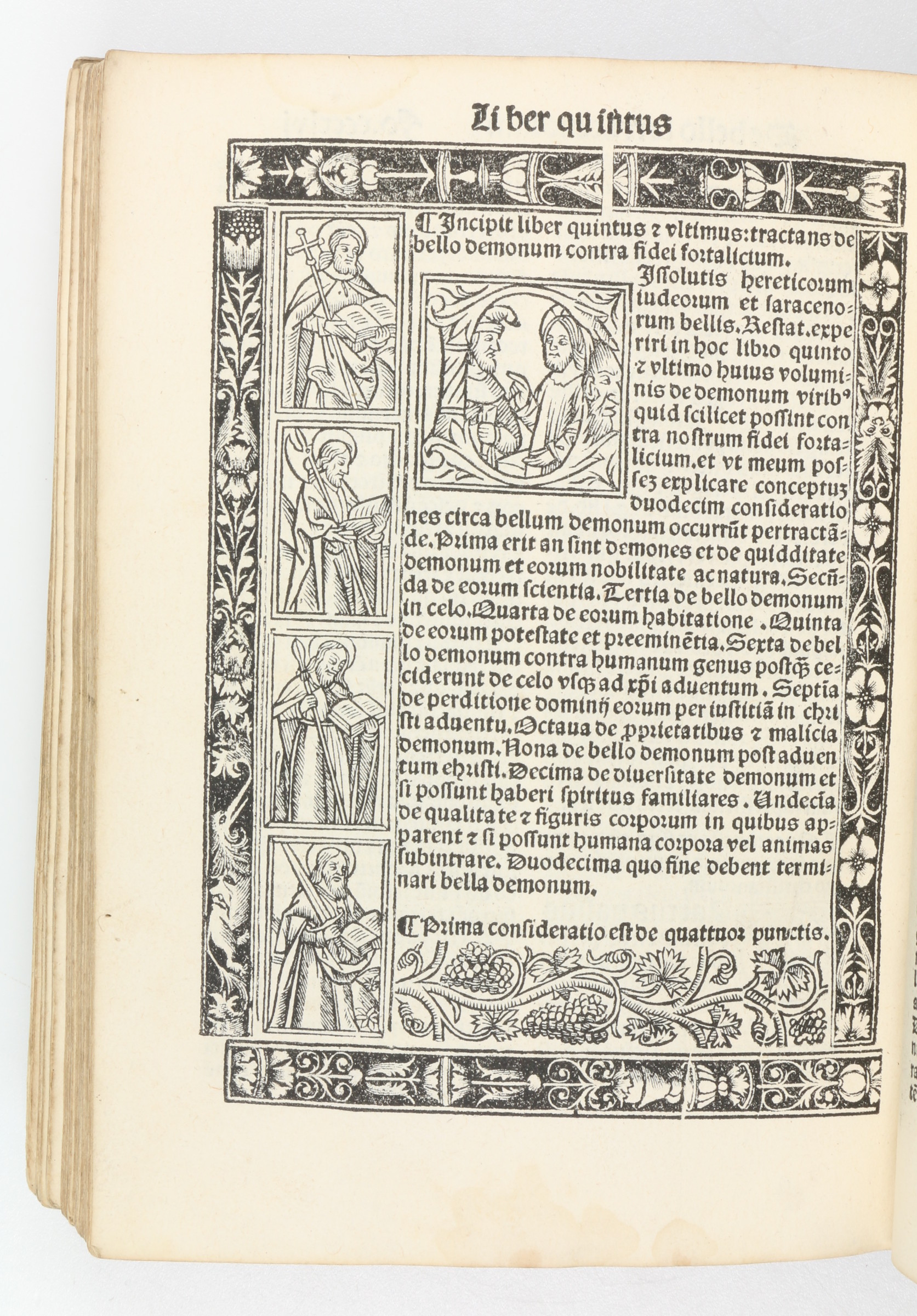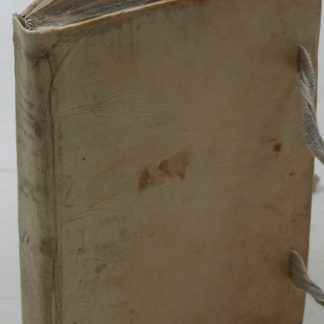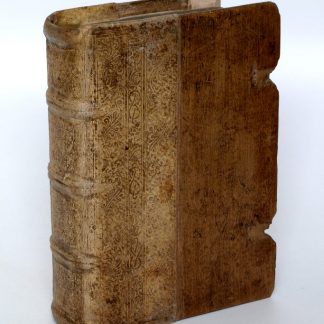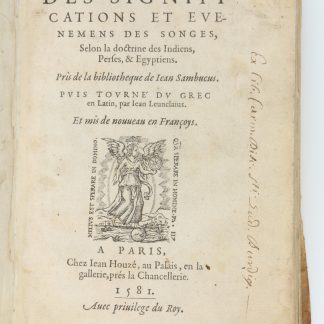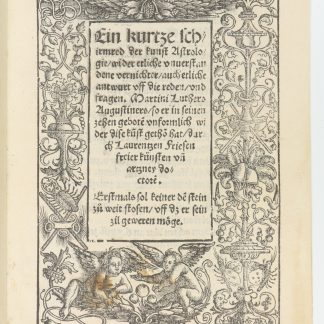A famous tract against Islam, the ideological foundation of the Spanish Inquisition
Fortalitium fidei in universos christiane religionis hostes Judaeorum et saracenorum [...].
Large 8vo. (8), CCCLXXI, (3) ff. Title printed in red and black with woodcut illustration and numerous woodcut initials and marginal illustrations repeated throughout the volume. Contemporary full calf over wooden boards with blind-tooled ornaments and remains of clasps, rebacked in the 19th century with new spine and marbled endpapers.
€ 9.500,00
Nicht vorrätig
This "Fortress of the Faith, against all the enemies of the Christian religion, restraining the rage of Jews and Muslims", written c. 1458, is the principal work of the baptized Spanish Jew de Spina. It is considered the "methodical and ideological foundation of the Inquisition. The book, divided into five chapters, targets chiefly Jews and Muslims" (cf. LMA I, 408f.). Of the five books, "the first [is] directed against those who deny the Divinity of Christ, the second against heretics, the third against the Jews, and the fourth against Islam and the Muslims, while the fifth book treats of the battle to be waged against the Gates of Hell. In this last book the author dwells at length upon the demons and their hatred of men; the powers they have over men and the diminution of these powers, owing to the victory of Christ on the Cross, the final condition of the demons, etc." (Catholic Encyclopaedia). "Ouvrage fort curieux de ce théologien espagnol [...] il était dit-on d'origine juive, c'est pour cela que son 'Fortalicium' pèut ètre classé dans une bibliothèque kabbalistique" (Caillet). Part 3, on the iniquities of the Jews, is a veritable encyclopaedia of medieval antisemitic libel, containing numbered lists of Jewish "cruelties" and refutations of the Jews' supposed anti-Christian arguments. The section on Islam lists the numerous Saracen wars, while the fifth book is devoted to the battle to be waged against the Gates of Hell and its resident demons, whose population the author calculates at over 133 million.
Block loosened in places. Clasps missing; binding rubbed but original blind-tooling of boards remains recognizable, even though partly obscured by the 19th century leather that replaced the spine. A fine post-incunabular edition, the final one to appear, embellished with numerous woodcut illustrations.
Adams S 1593. BM-STC French 170. Coumont (Witchcraft) S84.7. IA 103.849. Caillet 10306 ("Incunable gothique rare").


